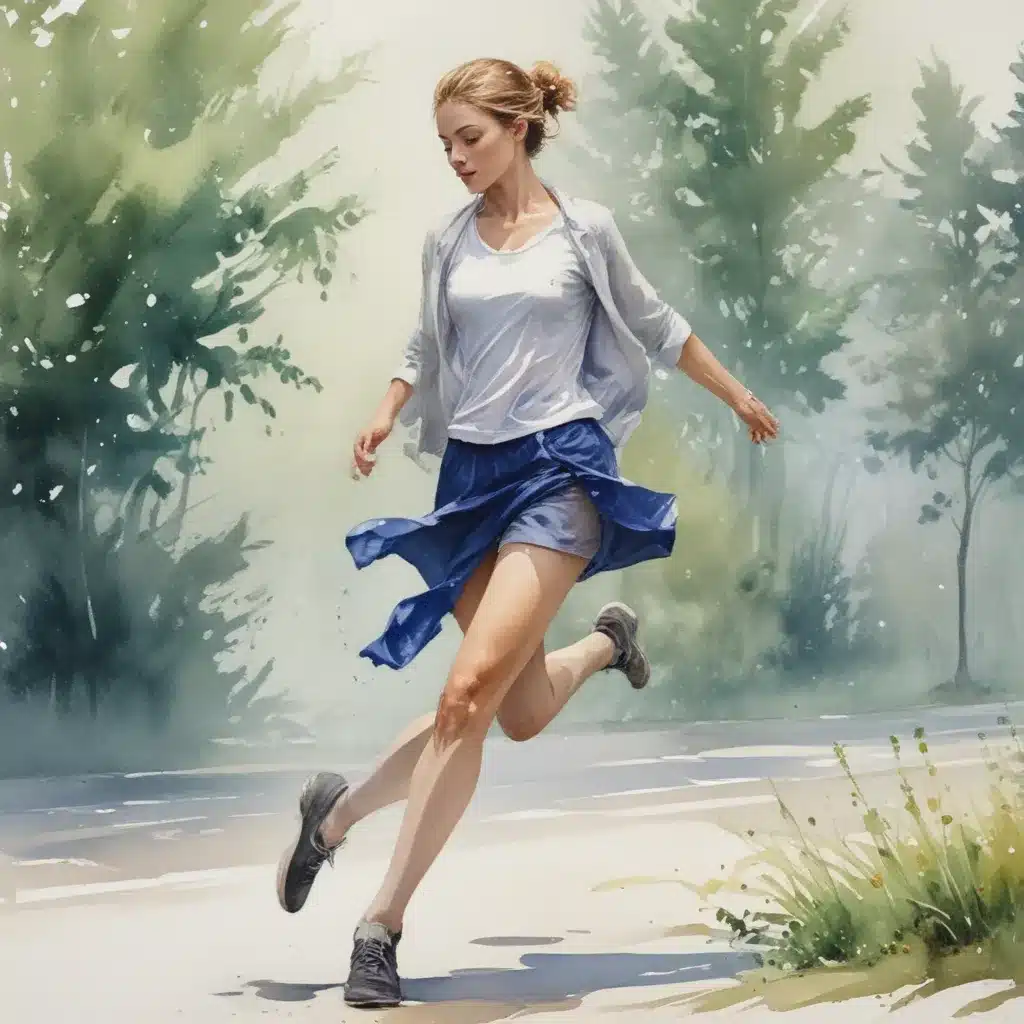
The captivating dance of colours, the fluidity of brushstrokes, the evocative interplay of light and shadow—watercolour painting is a medium that lends itself beautifully to capturing the essence of movement. Whether you’re seeking to depict the graceful sway of a dancer, the swift motion of a bird in flight, or the dynamic energy of a bustling cityscape, mastering the techniques to convey a sense of kinetic energy is a critical skill for any aspiring watercolour artist.
Now, this might seem counterintuitive…
Depicting Movement
At the heart of creating kinetic compositions in watercolour lies the artist’s ability to harness the inherent fluidity of the medium. The transparent, water-based nature of watercolours allows for a spontaneous and expressive handling of the paint, lending itself perfectly to the representation of dynamic subjects and energetic scenes.
Gestural Brushwork: One of the most effective ways to convey a sense of movement in your watercolour paintings is through the use of bold, expressive brushstrokes. By applying the paint with a sense of urgency and immediacy, you can capture the dynamism of your subject matter. Experiment with varying brush pressure, directional strokes, and a more fluid application of the paint to suggest the flow and momentum of your composition. Avoid overly tight or controlled brushwork, as this can result in a static, lifeless appearance.
Dynamic Composition: The arrangement of elements within your painting plays a crucial role in generating a sense of movement. Utilize diagonal lines, asymmetrical balance, and off-centre focal points to create a visual flow and sense of energy within the frame. Incorporate overlapping shapes, partially obscured forms, and fragmented edges to hint at the continuous motion of your subject. Carefully consider the placement and orientation of your key elements to guide the viewer’s eye through the composition.
Illusion of Motion: In addition to the physical application of the paint, you can also create the illusion of movement through the strategic use of colour, value, and edge treatment. Employ soft, blurred edges to suggest the blurring of forms in motion, while sharper, more defined edges can convey a sense of crisp, decisive action. Vary the intensity and hue of your colours to mimic the shifting tones and patterns that occur in dynamic subjects, such as the iridescent sheen of a bird’s feathers or the shimmering reflections on water.
Mastering Watercolour Techniques
Harnessing the unique properties of watercolour is essential for bringing your kinetic compositions to life. By embracing the medium’s inherent fluidity and spontaneity, you can unlock a world of expressive possibilities.
Wet-on-Wet Techniques: One of the hallmarks of watercolour painting is the ability to create soft, blended edges and diffused effects through the “wet-on-wet” technique. By applying wet paint onto a pre-wetted surface, you can achieve a sense of movement and atmosphere that is difficult to replicate in other media. Experiment with pouring, dripping, and manipulating the paint while it’s still wet to capture the natural flow and merging of colours.
Glazing and Layering: The translucent nature of watercolour allows you to build up depth and complexity through the application of successive transparent layers. Use glazing techniques to gradually build up washes of colour, allowing each layer to dry completely before adding the next. This approach enables you to create a sense of depth and luminosity, as well as subtle variations in tone and hue that can enhance the perception of movement.
Controlled Spontaneity: While watercolour painting is renowned for its unpredictable and organic qualities, mastering the balance between control and spontaneity is key to creating dynamic, kinetic compositions. Embrace the unexpected effects that can emerge from the interplay of water, pigment, and paper, but also maintain a level of control over the overall composition and the direction of your brushstrokes. Experiment with techniques like wet-into-wet, dry-brush, and spattering to introduce elements of chance and serendipity into your work.
Creative Inspiration
Capturing the essence of movement in your watercolour paintings requires not only a solid understanding of the medium’s technical aspects but also a keen eye for observing the world around you and a willingness to embrace the creative process.
Observational Studies: Begin by immersing yourself in the visual world, closely observing the dynamic movements and rhythms that occur in nature, in the built environment, and in the human form. Sketch quick studies, make detailed notes, and capture photographic references to build a visual library of kinetic inspirations. Pay attention to the way light and shadow dance across surfaces, the fluid gestures of the human body, and the graceful, undulating patterns of natural elements like water, wind, and foliage.
Imagination and Experimentation: While observational studies can provide a strong foundation, don’t be afraid to let your imagination take the lead. Experiment with abstract, expressive mark-making to evoke a sense of movement, or incorporate more conceptual approaches that challenge the traditional boundaries of watercolour painting. Explore the use of unconventional techniques, such as dripping, splattering, or scraping the paint, to introduce unexpected and spontaneous elements into your compositions.
Emotive Expressions: Beyond simply depicting physical motion, consider how you can imbue your kinetic compositions with emotional resonance. Explore themes of energy, vitality, tension, or tranquility, and allow your personal experiences and inner states to influence the way you interpret and represent movement. By infusing your watercolour paintings with a sense of personal expression, you can create work that not only captivates the eye but also resonates with the viewer’s own lived experiences.
Mastering the art of depicting movement in watercolour is a journey of exploration, experimentation, and continuous refinement of your technical skills and creative vision. By embracing the inherent fluidity and spontaneity of the medium, you can unlock a world of dynamic, kinetic compositions that breathe life into your artistic expressions. So, pick up your brushes, unleash your creativity, and let the dance of watercolour transport you and your viewers into a realm of captivating, kinetic artistry.
Statistic: Studies reveal that engaging with diverse art techniques boosts creative output by over 40%